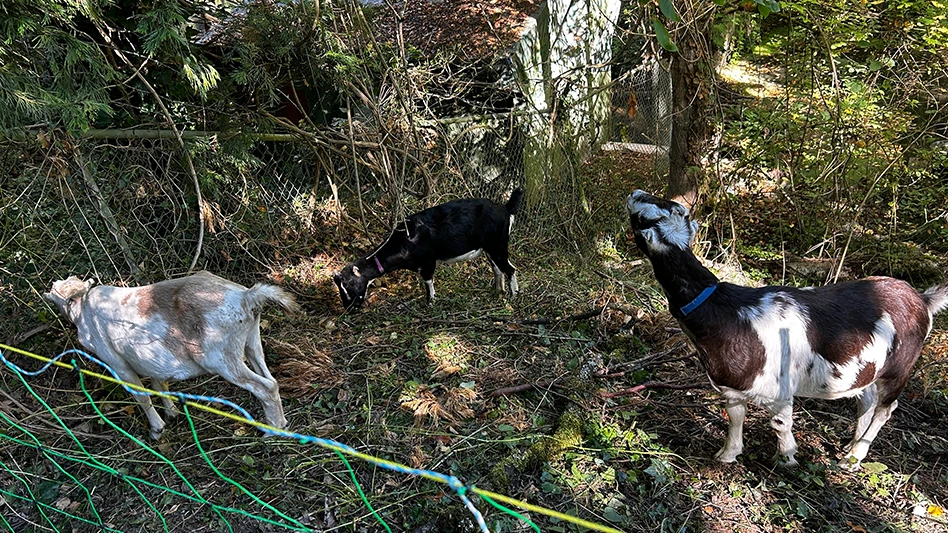
Golf courses in parts of the Carolinas are taking a multi-million dollar hit as a result of turf loss caused by cold weather extremes that occurred months ago. While many courses are getting by with “ground under repair” rules as new turf grows in, some are being forced to close altogether. It is the region’s most severe and widespread incidence of winterkill since 1994 with damage from central North Carolina to Myrtle Beach, S.C.
.jpg) |
Winterkill affects warm-season grasses that cover most fairways and an increasing percentage of greens in the region. Those surfaces such as Bermudagrass fall dormant in winter losing all color and growing characteristics. As a result, winterkill only shows up when the affected grass fails to respond to warmer temperatures in the spring, just as golfers are ready to get busy again.
“The fact is there is really nothing a golf course superintendent can do to prevent it short of using covers on the entire golf course, and that’s a physical and financial impossibility,” says Michael Shoun, director of agronomy for McConnell Golf, which owns or operates 11 private courses across the Carolinas. “The worst of the damage shows up on areas that see a lot of shade, have high traffic, are north-facing or that stay wetter.”
McConnell Golf alone will spend close to $250,000 repairing damage at its facilities, ranging from needing one truckload (about 10,000 square feet) of new sod at The Reserve Club at Pawleys Island in South Carolina to closing the Dye Course at Sedgefield Country Club in Greensboro, NC. The Dye Course, sister course to the Ross Course which hosts the Wyndham Championship for the PGA TOUR, will be sprigged starting June 8 and could be closed up to six weeks depending on growing conditions.
“When you consider the number of courses that are affected I think you’re looking at anywhere from $4 million to $5 million in sodding and sprigging in central North Carolina alone,” Shoun says. “And that is not counting anything from lost revenue from closures or tournaments and play having to be cancelled.”
In golf-centric Myrtle Beach, some courses are just now learning the extent of their turf loss because of a cooler than normal spring. Many courses there overseed with a cool-season grass or use a pigment to provide color on fairways that visiting golfers appreciate. As the overseed is removed or colorants wear off, some superintendents are finding wide swaths of the underlying Bermudagrass are dead.
A storm in the last week of February that sent the mercury plummeting and sub-freezing temperatures in some areas late March are suspected as the chief culprits.
“It’s important for golfers to realize that this is an extreme event affecting public and private courses alike,” says Tim Kreger, executive director of the 1,800-member Carolinas Golf Course Superintendents Association. “It’s not a question of expertise or budget. It’s simply a matter of when weather conditions get bad enough then bad things are going to happen. Golfers should know our members are all doing they possibly can to get courses back to their best as soon as their club can afford and Mother Nature’s conditions will allow.”
Demand for Bermudagrass sod has soared pushing prices to nearly double in some cases. Some superintendents report that a square foot of 410 Bermudagrass sod which cost 17 to 19 cents in 2014 is now costing as much as 32 cents. Fortunately, sod farms have been able to provide a healthy product. They don’t have to grow their turf under golf course conditions. They are wide open to sunlight, mostly flat and well-drained, mowed at more than twice the height of the average fairway and don’t endure compaction from traffic.
Among the worst hit by winterkill was Bryan Park Golf Course, a public play facility also in Greensboro, which lost about 30 acres of turf across its two 18-hole layouts. The Champions course will close on June 15 for sprigging with a view to reopening in “three to four weeks.” “There is enough surviving grass there that I think we will be able to recover in that time,” says certified golf course superintendent Kevin Smith.
With about 10 acres of grass lost, the Champions course is the less affected of the two but with the Carolinas Open being played there in August, Smith wants to give that course as much time as possible to recover. The Players course will close for sprigging on July 6. “Obviously this will have a pretty substantial impact on our revenues,” Smith says. “Mother Nature remains firmly in control.”
For courses already strapped coming out of the recession, the cost of a contractor laying an acre of sod runs between $25,000 and $30,000. Then there is the additional cost of fertilizing and irrigating to get the new turf properly established. The advantage to sodding is a much swifter return to play than with sprigging, which can cost between $6,000 and $7,000 an acre and takes those areas out of play anywhere from three to six weeks or more.
Latest from Golf Course Industry
- The Aquatrols Company story
- Albaugh receives registration for chlorantraniliprole
- Honored by the association he helped expand
- The Carolinas GCSA Conference and Show: 5 W’s preview
- A great game. A sustainable game
- Envu welcomes new campaign activation manager
- Beyond the Page 61: An apprenticeship roundtable
- Epoch Science introduces Plant Fitness turf product line





